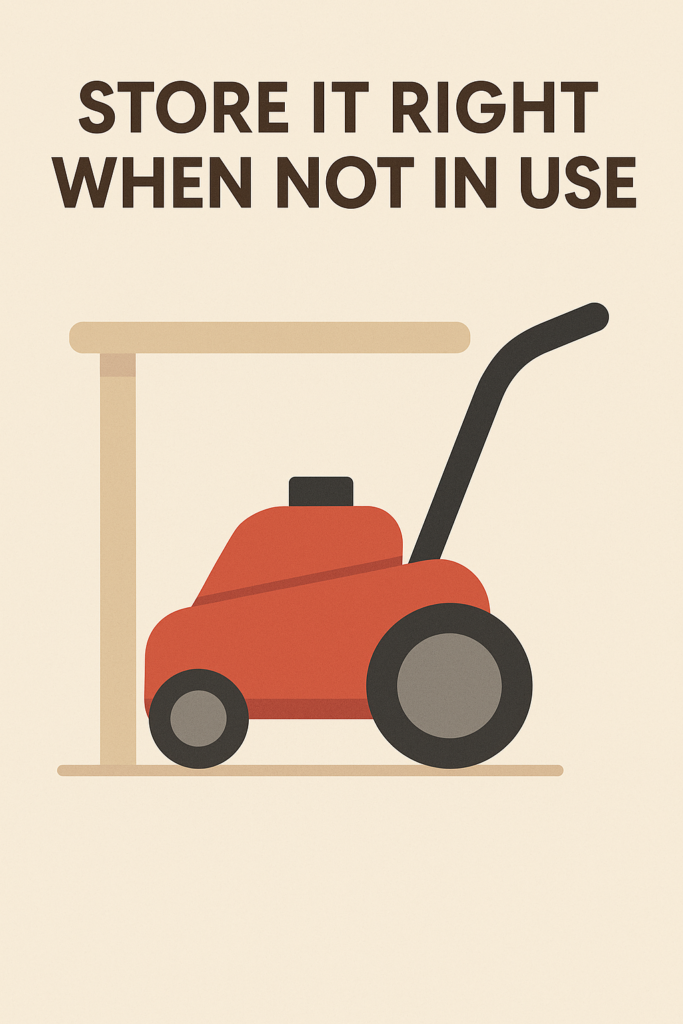
Brush cutters are workhorses. Whether you’re trimming grass along a fence, clearing stubborn weeds, or managing undergrowth in an orchard, these machines put in serious effort. But just like any hardworking tool, they need regular care to keep running at their best.
In this blog, we’ll walk you through the essential maintenance practices that will extend the life of your brush cutter, improve its cutting efficiency, and save you from costly repairs. It’s not rocket science — just a few simple habits that go a long way.
1. Start With Clean Cuts: Clean the Machine After Every Use

After a long day in the field, your brush cutter will be covered in grass clippings, dirt, sap, and maybe even a few twigs stuck in the blade guard. Leaving that gunk on the machine can lead to rust, overheating, and clogging.
What to do:
- Wipe down the blade and head area.
- Use a soft brush or cloth to clean air vents and the engine casing.
- If necessary, use compressed air to remove debris from tight spots.
A clean machine is not just about looks. It prevents wear and keeps your engine cool during operation.
2. Fuel Wisely: Always Use Fresh, Clean Petrol

Brush cutters typically use petrol engines, and that means fuel quality matters a lot. Old or contaminated petrol can clog the carburetor, reduce power output, and cause the engine to misfire.
Tips:
- Don’t store fuel in the machine for weeks at a time.
- Use fresh petrol and mix it correctly if you’re using a 2-stroke engine (usually with engine oil in a 25:1 or 50:1 ratio, depending on the model).
- Always use clean containers to store and pour fuel.
Running your machine on poor-quality fuel is like trying to run a marathon on junk food. It just won’t go well.
3. Sharpen Blades Regularly (And Replace When Needed)

A dull blade doesn’t just make the job harder — it puts stress on the engine, consumes more fuel, and gives a rough finish. You’ll also notice increased vibration and noise when the blade is due for sharpening or replacement.
What to look for:
- Uneven cutting
- Excessive vibration
- Visible nicks or wear on the blade edge
You can sharpen the blade yourself with a file or grinder, or take it to a local technician. Just make sure it’s balanced after sharpening to avoid wobble during use.
4. Air Filter: The Forgotten Hero

The air filter protects your engine from dust and debris — and in rural India, there’s a lot of both. A clogged filter can reduce airflow, causing the engine to overheat or run unevenly.
Check it every 10 hours of use:
- Foam filters can be washed in soap and water, dried, and reused.
- Paper filters should be gently cleaned or replaced if visibly dirty.
Make it a habit to glance at the filter weekly. It takes less than a minute and could save you a whole engine overhaul.
5. Check the Spark Plug Every Month

The spark plug is what keeps your brush cutter alive. A worn or dirty spark plug leads to poor ignition, hard starts, and rough running.
Maintenance steps:
- Remove and inspect the spark plug every month.
- Clean any carbon buildup with a wire brush.
- Replace if the electrode is worn or the insulator is cracked.
Always use the right type of spark plug recommended by the manufacturer. And while you’re at it, check the gap with a feeler gauge.
6. Lubricate the Moving Parts

Brush cutters have several moving parts that need occasional greasing, especially the drive shaft, gearbox, and cutting head.
Why it matters:
- Reduces friction and wear
- Keeps the machine quieter
- Improves cutting smoothness
Most machines have grease points or filler bolts. Use good-quality grease and don’t overdo it. A little goes a long way.
7. Store It Right When Not in Use

A good machine deserves a good resting place. Leaving your brush cutter exposed to rain, dust, or extreme sunlight will ruin its paint, rust its screws, and shorten its life.
Best storage practices:
- Keep it in a dry, shaded area
- Empty the fuel tank if you’re storing it for more than a month
- Cover it with a cloth or tarp
If your machine is going to sit idle during off-seasons, consider giving it a quick service before packing it away.
8. Follow the User Manual (Seriously)

We know — nobody loves reading manuals. But your brush cutter’s manual has real gold in it: the correct fuel mix, spark plug type, service intervals, and other small details that matter a lot.
Following the manual ensures you’re not voiding the warranty or missing a crucial maintenance step.
Final Thoughts: Take Care, Get More Done
Your brush cutter isn’t just a tool — it’s a daily partner on your land. A little time spent maintaining it will repay you with better performance, less downtime, and longer life.
And if you’re using a Bonhoeffer Brush Cutter, you’re already ahead of the curve. Our machines are built to handle rough terrain and tough vegetation — but even the toughest need care.
So before your next cutting session, give your machine a quick check. Clean it, fuel it, and listen to how it runs. Because a well-maintained brush cutter doesn’t just work better — it works with you.
Need help finding the right brush cutter or spare parts? Visit bonhoeffermachines.com or drop us a message at sales@bonhoeffermachines.com.






